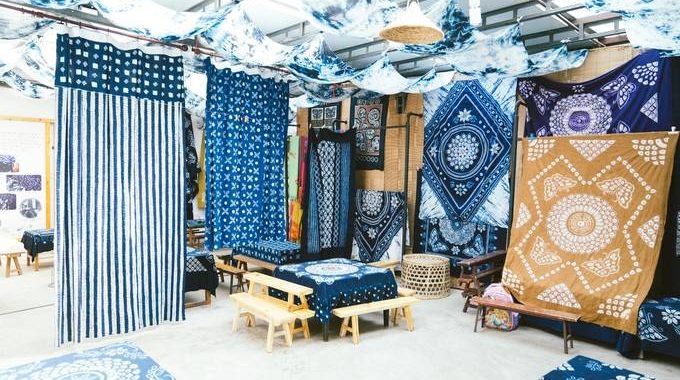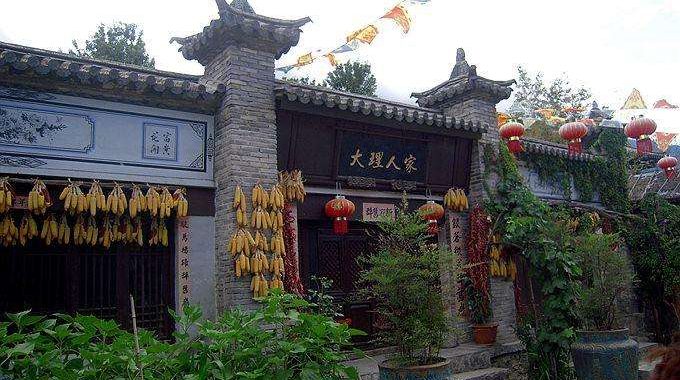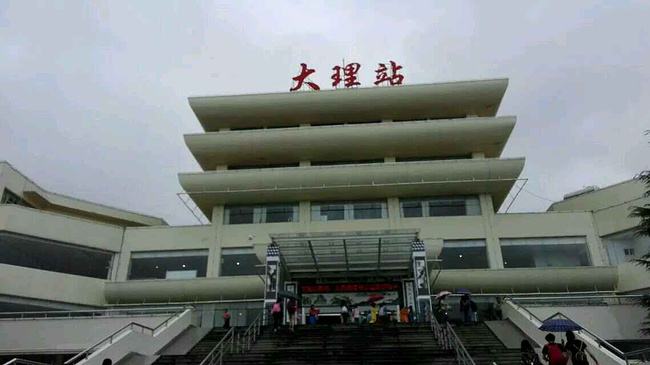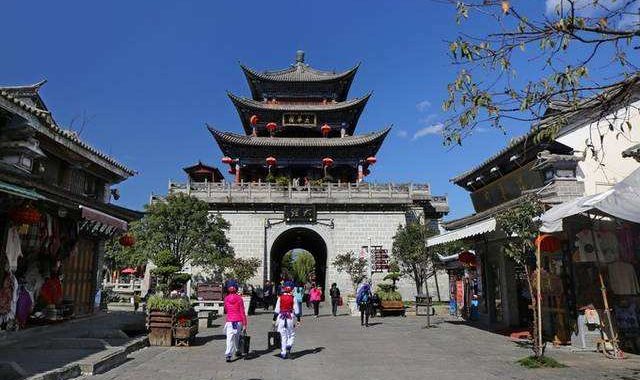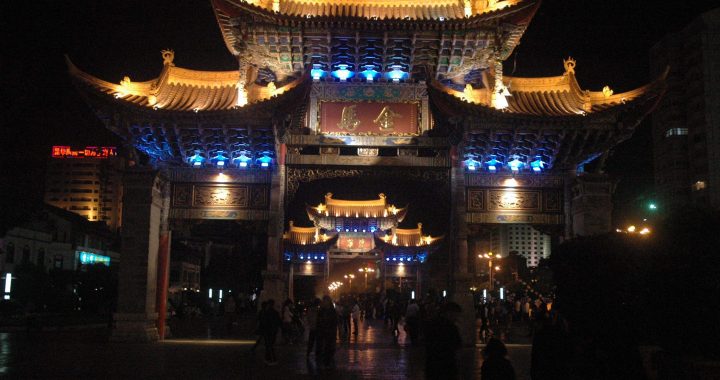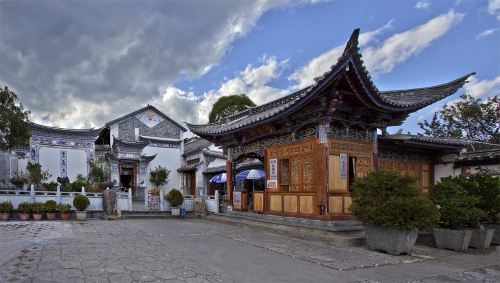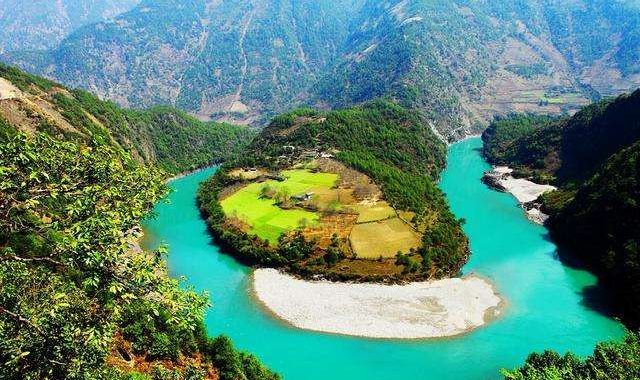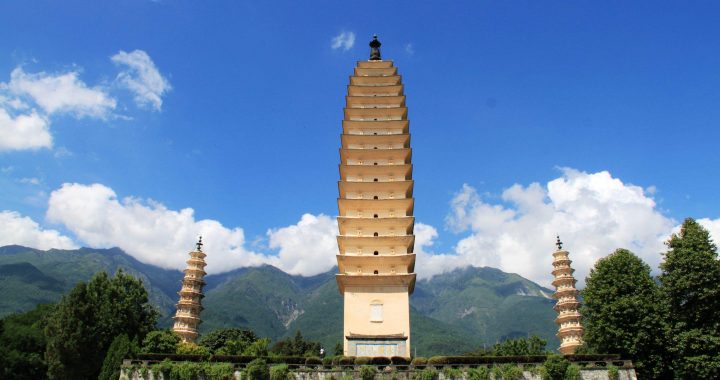Three Pagodas in Dali
4 min readThe Three Pagodas of Chongsheng Temple in Dali, one of the earliest architectures in Yunnan province, enjoys a high reputation all over China. The main pagoda, called Qianxun Pagoda, stands in the center of these three pagodas. It is a 16-storied multieaved brick pagoda of 69.13 meters high, its plane is in the shape of a square with a width of 9.85 meters. The base of this pagoda consists two parts: the upper part is a 2.07-meter-high throne of Mount Sumeru and the lower part is 1.2 to 1.5 meters high surrounded by bluestone sideboards and balusters. On the eastern part of the pagoda, four vigorous and bold characters-YongZheng Shan Chuan (means “bless the country safe forever”)-are carved on the marble slab in the center of the wall. The body part is in the style of looping structure with the perpendicular inner walls perforating from top to bottom. The center of this pagoda is hollow and equipped with wooden stairs and floors for climbing up.
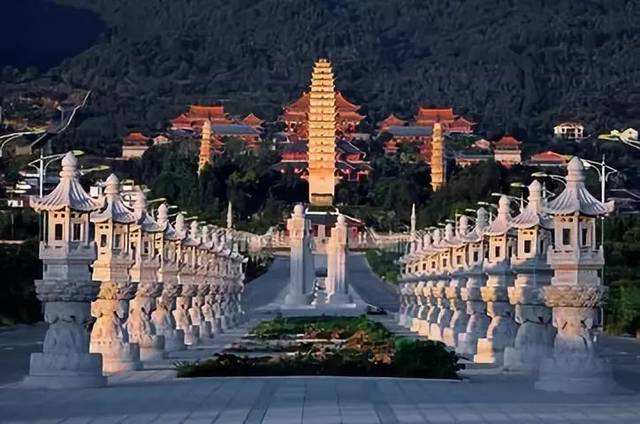
The eaves of the pagoda are hanging-over style. The first story is relatively high, taking up almost one fifth of the total by 13.45 meters.
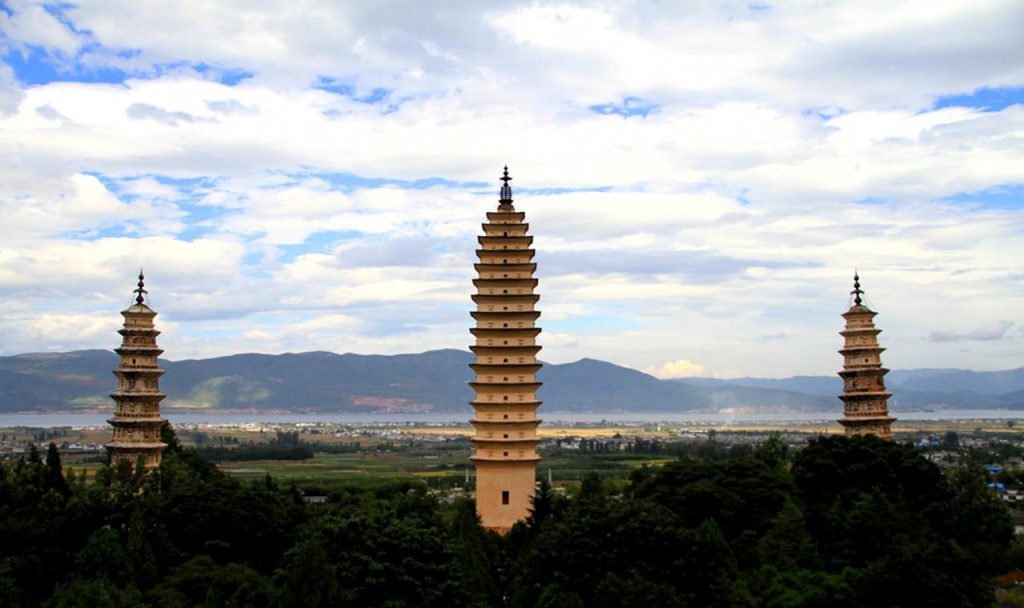
The second story is 3 meters high and the height of the other stories above decreases from bottom to top. There is a carved shrine containing a white marble sitting Buddha statue at the center of each fa? ade of every story. Windows are opened at both southern and northern sides, through which sunshine and fresh air are able to come in. Besides, monolayer square pagodas are masoned at both sides on each layer. Similar to Lesser Wild Goose Pagoda in Xi’ an, the outline of them is in the shape of a curve, which is a typical feature among the pagodas built in the Tang dynasty. On the top of Qianxun Pagoda, four huge redpolls are located. It is said that dragons used to live in Dali. They always stirred up, bringing strong winds and rains to harm people. The only things that dragons are afraid of are pagodas and redpol1s. Therefore, people set up in Dali a pagoda with redpolls hanging on the top to drive dragons away. Since then, citizens in Dali were finally able to live in peace and contentment without being disturbed by dragons.
The other two sibling pagodas on the north and south are composed of ten storieswith a height of 42.19 meters. The body parts of them are hollow below the eighth floor. They are multieave-style solid brick pagodas in the shape of octagon pavilions. Painted in white, these two pagodas are peaceful and elegant in appearances. The bases of them are relatively low and the height of each floor above the second one is almost the same. Patterns of lucky clouds, lotus and precious vases are carved on each floor except the second and eighth one, where arched niches with Buddha statues are decorated. Pillars and lattice works in the shape of towers are set on the fourth, sixth and eighth floors. Niches shaped like pagodas are carved on each of the eight sides, the top parts of which are of varied types.
Lotuses, both the glooming ones and buds, are decorated on the eaves. In addition, on the top of each pagoda fixed three bronzed gourd. The taper-shaped outline in appearance, together with the sharp contrast in color, makes these two pagodas look decent, beautiful and outstanding. Seen from a distance away, these three pagodas are as unified in a whole, full of power and imposing and embody a distinctive ethnic feature.
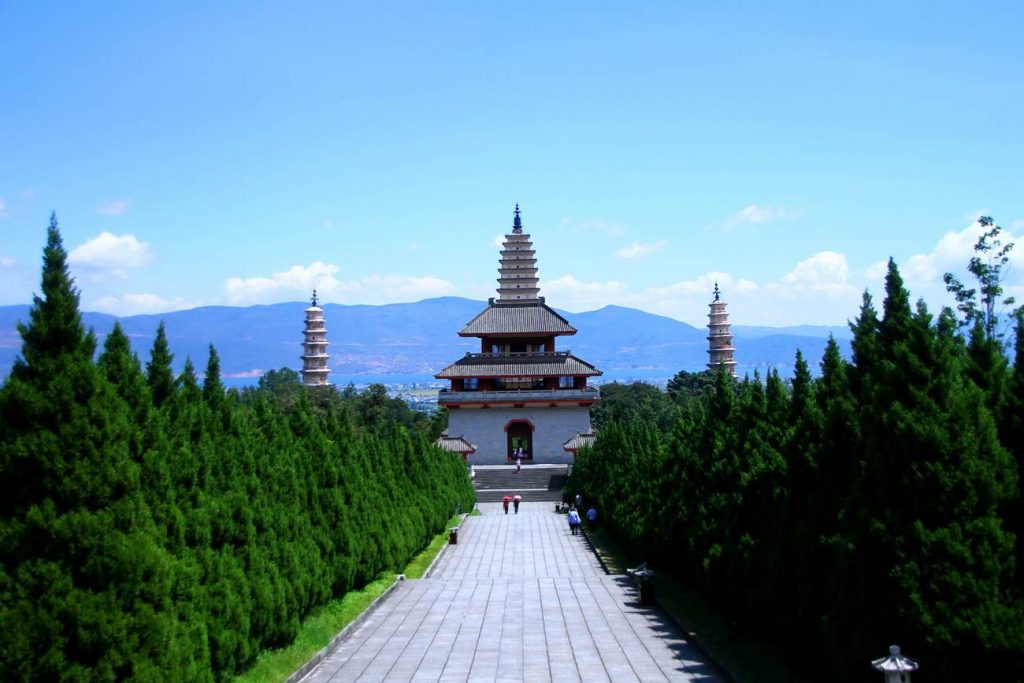
Historically, natural disasters, such as earthquakes, frequently happened in Dali. In 1925, the spire of Qianxun Pagoda was shaken down in an earthquake. But the rest parts remained safe and sound after exposing to the weather for over one thousand years. During 1978 to 1981, the staff of national cultural relics preservation departments renovated these pagodas so as to make them stand steadier.
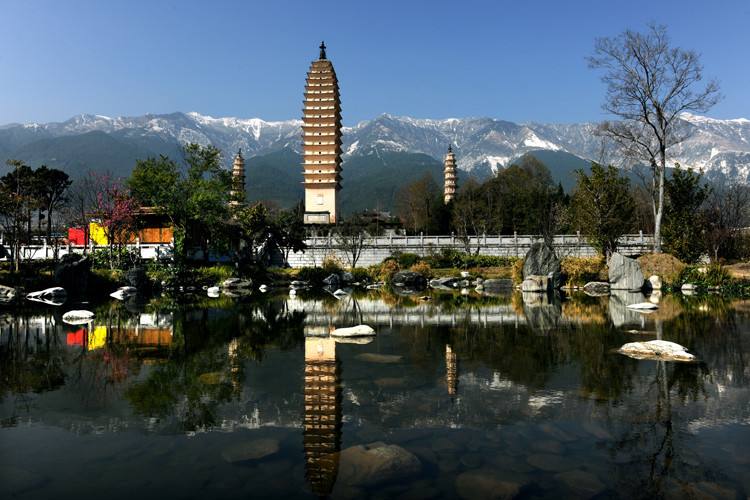
The pinnacle of Qianxun Pagoda was recovered and equipped then with lightning protections. The wooden stairs were also renovated. When the workers were cleaning up the eastern gate of the pagoda, which was sealed in the Qing dynasty, they found over 680 pieces of cultural relics. These relics of Nanzhao kingdom (649-902) and Dali kingdoms (937-1253) are the richest and most and important ones that have everbeen found. There are 154 Buddha statues of varied gestures. They are mainly made of bronze, but gold, silver, crystal, jade and wooden ones also exist.A gold statue ofAvalokitesvara distinguishes itself from others for this 24cm-high,1135g-weight statue is in the exact shape as the icon painted in the famous picture-A Picture Rol1 of National Historical Paintings in the Period of Resurgence. It is said to be one of the earliest Buddha statues that have ever spread to Dali. In addition, somesutras written in Chinese ink, pagoda models of varied types and precious cultural relic spread from the central plains of China, such as bronze mirrors, china wares and seals were also found. All of them are of great cultural value.
